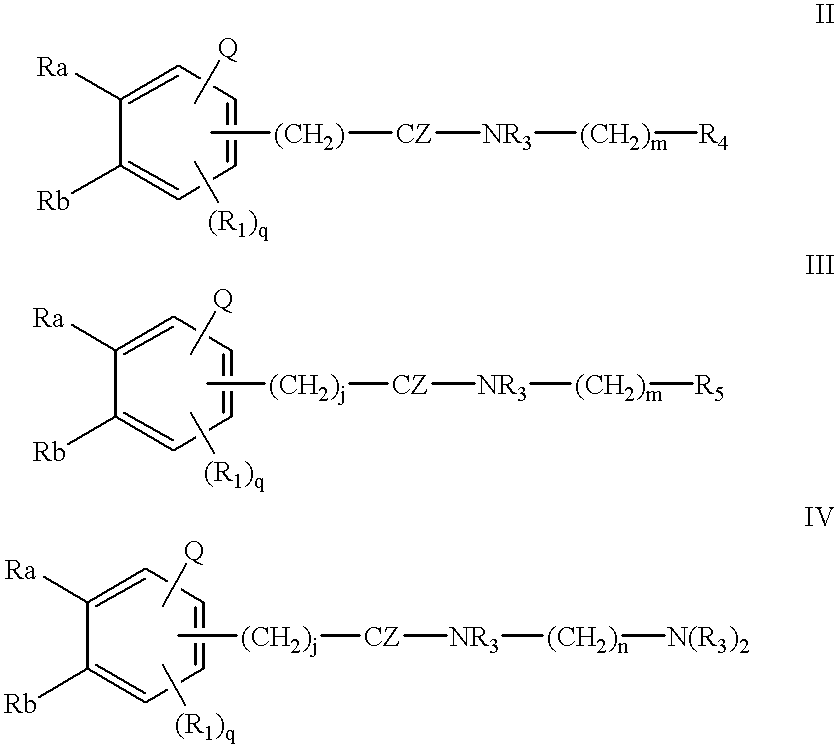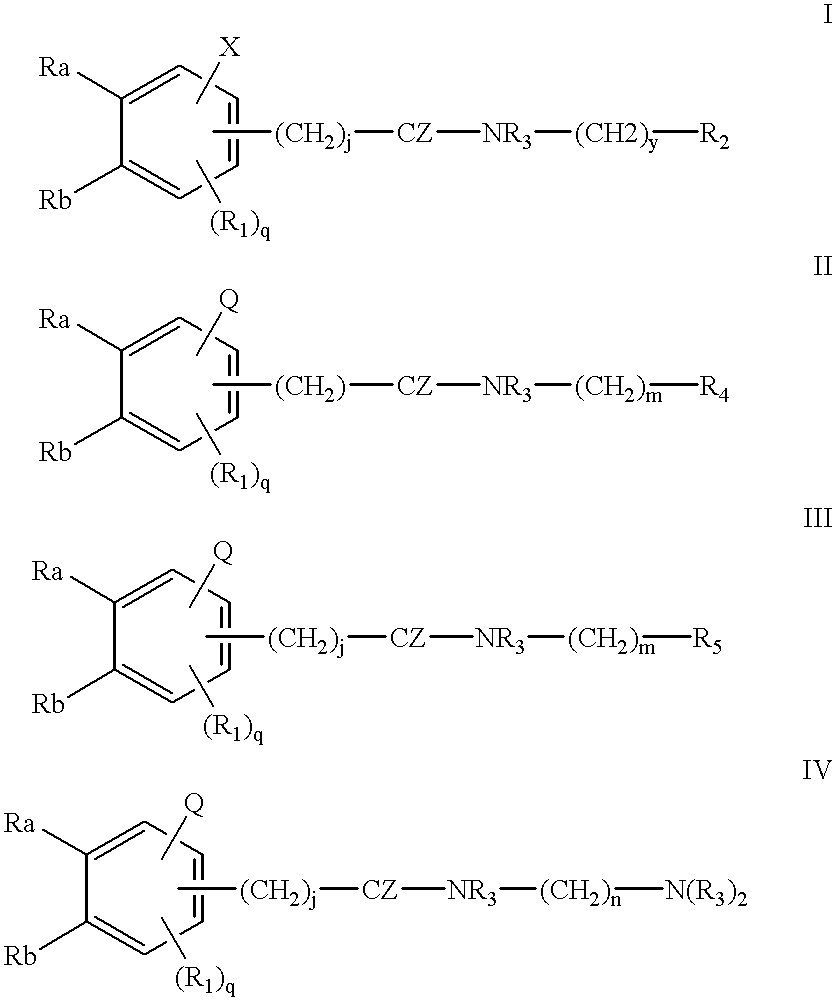Compounds for cancer imaging and therapy
a cancer imaging and compound technology, applied in the direction of group 3/13 element organic compounds, material analysis using wave/particle radiation, hydrocarbons, etc., can solve the problems of frequent relapse, poor prognosis of nodular melanomas, and frequent formation of distant metastases
- Summary
- Abstract
- Description
- Claims
- Application Information
AI Technical Summary
Problems solved by technology
Method used
Image
Examples
example 2
Synthesis of 5-iodo-(N,N-diethylaminoethyl)-2,3-dihydrobenzofuran-7-carbox-amide
Materials and Methods
[0181] Melting points were determined with a Fisher-Johns apparatus. .sup.1H and .sup.13C R spectra were recorded on a Brucker 300 AM spectrometer. Unless noted, chemical shifts were expressed as ppm using tetramethylsilane as an internal standard. The thin layer chromatography (TLC) system consisted of Analtech uniplate silica gel GF plates (250 microns, 10.times.20 cm), using CHCl.sub.3 / MeOH:80 / 20 as solvent. Radioactive spots were scanned and recorded by a Bioscan 300 imaging scanner equipped with automatic plate reader. Mass spectra (chemical ionization) were recorded on Finnigan 1015 mass spectrometer. Na.sup.131I was obtained from duPont NEN and Na.sup.125I was obtained from Bristol Meyers Squibb. Elemental analyses were performed by Galbraith Laboratory of Knoxville, Tenn.
Synthesis of 5,7-dibromo-2,3-dihydrobenzofuran (F)
[0182] To a solution 2,3-dihydrobenzofuran (25 g, 0.21 m...
example 3
Synthesis of .sup.125I-(N-Benzylpiperidin-4-yl)-4-iodobenzamide 4-[.sup.125I]BP (N)
Materials and Methods
[0190] Melting points were determined with a Fisher-Johns apparatus. .sup.1H and .sup.13C NMR spectra were recorded on a Brucker 300 AM spectrometer. Unless noted, chemical shifts were expressed as ppm using CDCl.sub.3 as an internal standard. All chemicals were obtained form the Aldrich Chemical Company, Milwaukee, Wis. The thin layer chromatography (TLC) system consisted of Analtech uniplate silica gel GF plates (250 microns, 10.times.20 cm), using CHCl.sub.3 / MeOH:90 / 10 as solvent. Radioactive spots were scanned and recorded by a Packard 7220 / 21 radiochromatogram. Mass spectra (chemical ionization) were recorded on Finnigan 1015 mass spectrometer. Na.sup.125I was obtained from Amersham, Arlington Heights, Ill.
Preparation of (N-benzylpiperidin-4-yl)-4-iodobenzamide
[0191] A round bottom flask was charged with 4-iodobenzoic acid (3.0 g, 12.1 mmol) in chloroform (100 mL). To the sol...
example 4
Preparation of .sup.125I-(N-Benzylpiperidin-4-yl)-3-iodobenzamide
[0197] .sup.125 I-(N-Benzylpiperidin-4-yl)-3-iodobenzamide, 3-[.sup.125I]BP, was prepared by a procedure like that described above in Example 3, but using 3-iodobenzoic acid as starting material.
[0198] Unradiolabeled 3-IBP was prepared in 91% yield, m.p. 151-152.degree. C. m / e=420 (M.sup.+). .sup.1H NMR (.delta. ppm): 1.58-1.62 (m, 2H, CH.sub.2); 1.97-2.01 (m, 2H, CH.sub.2); 2.14-2.22 (m, 2H, NCH.sub.2); 2.85-2.89 (m, 2H, NCH.sub.2); 3.53 (s, 2H, benzylic CH.sub.2); 3.90-3.96 (m, 1H, CH); 5.98-6.01 (d, 1H, NH); 7.11-7.16 (m, 1H, arom); 7.24-7.32 (m, 5H, arom); 7.65-8.05 (m, 3H, arom). .sup.13C NMR (.delta. ppm): 32.04, 47.16, 52.20, 62.89, 126.06, 127.28, 128.32, 129.23, 130.22, 135.94, 136.78, 137.67, 140.28, 165.28.
PUM
| Property | Measurement | Unit |
|---|---|---|
| survival time | aaaaa | aaaaa |
| median survival time | aaaaa | aaaaa |
| body weight | aaaaa | aaaaa |
Abstract
Description
Claims
Application Information
 Login to View More
Login to View More - R&D
- Intellectual Property
- Life Sciences
- Materials
- Tech Scout
- Unparalleled Data Quality
- Higher Quality Content
- 60% Fewer Hallucinations
Browse by: Latest US Patents, China's latest patents, Technical Efficacy Thesaurus, Application Domain, Technology Topic, Popular Technical Reports.
© 2025 PatSnap. All rights reserved.Legal|Privacy policy|Modern Slavery Act Transparency Statement|Sitemap|About US| Contact US: help@patsnap.com



